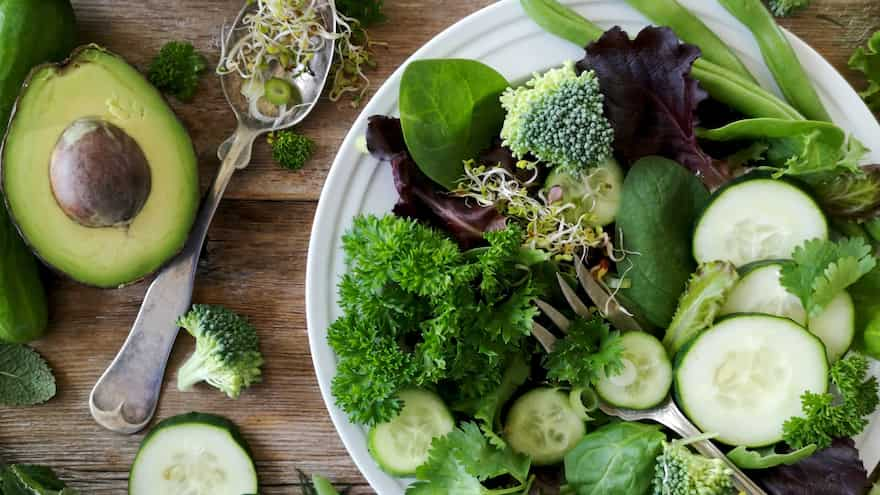Phytonutrients are compounds that give fruits and vegetables their unique tastes and aromas. They also give them the pretty colors that we love. Plant immunity systems are strengthened by phytonutrients. They protect plants from environmental threats such as sunburn and disease. These phytonutrients can also protect us against chronic diseases. The powerful anti-cancer and anti-heart disease effects of phytonutrients are well known. Epidemiological research shows that eating a variety of fruits and vegetables is associated with a lower risk of developing many chronic diseases, such as cardiovascular disease, and may even protect against certain types of cancer. The American Cancer Society recommends eating 2 1/2 cups of fruits and vegetables per day. Based on a daily diet of 2,000 calories, the US Dietary Guidelines also recommend consuming 2 1/2 cups of vegetables and 1 cup of fruits.
Getting started
Start by including as many plant-based colors in your meals and snacks as possible. Each color has its own health benefits. This is why it is important to have a balanced mix of all colors. The best way to get the most phytonutrients is to eat the brightest skins. These are the richest sources of phytonutrients. Avoid peeling fruits like peaches and apples to preserve their highest concentration of beneficial chemicals. Wash the wax off apples, as many stores sell them with a wax layer to keep them fresh. But make sure you eat the skin as well. That bright red color is an indicator of cyanidin, a very useful antioxidant that also possesses neuroprotection.
Every color has phytonutrients.
Below is a list of fruits and veggies sorted by color and the phytonutrients that they contain.
Red: Rich in the carotenoid Lycopene. This is a powerful scavenger for gene-damaging free radicals and seems to protect against prostate carcinoma. This component is also found in strawberries and raspberries.
Colored fruits can prevent chronic inflammation
Research has shown that chronic, low-grade inflammation can lead to silent death. This could be a contributing factor in the development of type 2 diabetes, cardiovascular disease, and other diseases. Experts say eating more colored fruits is one simple way of combating inflammation and staying healthy.
Yellow and orange:
These fruits provide beta-cryptothanxin, which is a protein that supports intracellular communication. It may be used to prevent heart disease. Sweet potatoes, carrots, and yellow peppers are rich in beta-cryptothanxin. Yellow and orange fruits (and vegetables) are also rich in beta-carotene, which is a vital antioxidant and one of the best raw materials for the body to produce vitamin A. Healthy levels of vitamin A can improve the immune system, skin, and mucous membranes.
Green:
 Picture credits - Unsplash
Picture credits - Unsplash
Purple and blue:
These foods are pretty to look at and are pretty great for health as well. Their color indicates that they contain powerful antioxidants called anthocyanins that are believed to slow down cellular aging. They also help prevent blood clot formation. Blueberries, blackberries, elderberries, grapes, cabbage, and even beetroot are rich in these nutrients that provide great benefits to the body.
Brown and white:
Brown and white foods are high in potassium, beta-glucans (soluble fibers that improve gut health), and EGCG (epigallocatechin gallate), which protect against cancer, heart disease, digestive tract troubles, etc. This group of foods also contains antioxidant flavonoids such as quercetin and kaempferol. Mushrooms, onions, potatoes, garlic, and cauliflower are great examples.
Reach for the rainbow
A healthy plate should contain at least 2 1/2 cups of colorful vegetables and 2 cups of fruits each day. Here are some tips to help you achieve it. Eat in twos. Have two meals in the morning and two in the afternoon. You can eat snacks between meals. Grab some raw vegetables or fruit to munch on. Look at your shopping cart. You can swap colors to increase the number of color choices and phytonutrients. Start with a cup of vegetable soup; try a spinach salad to see if you can add more vegetables. For dessert, add fresh fruit to the meal and a cup of green tea. Local produce is also available at farmers markets and community-supported farms, which are excellent sources of fresh, organic produce. Ask the farmer for new ideas on how you can prepare fresh fruits and vegetables. You can also eat frozen produce! Although seasonal produce might be limited, frozen fruit and vegetables are still good options.


